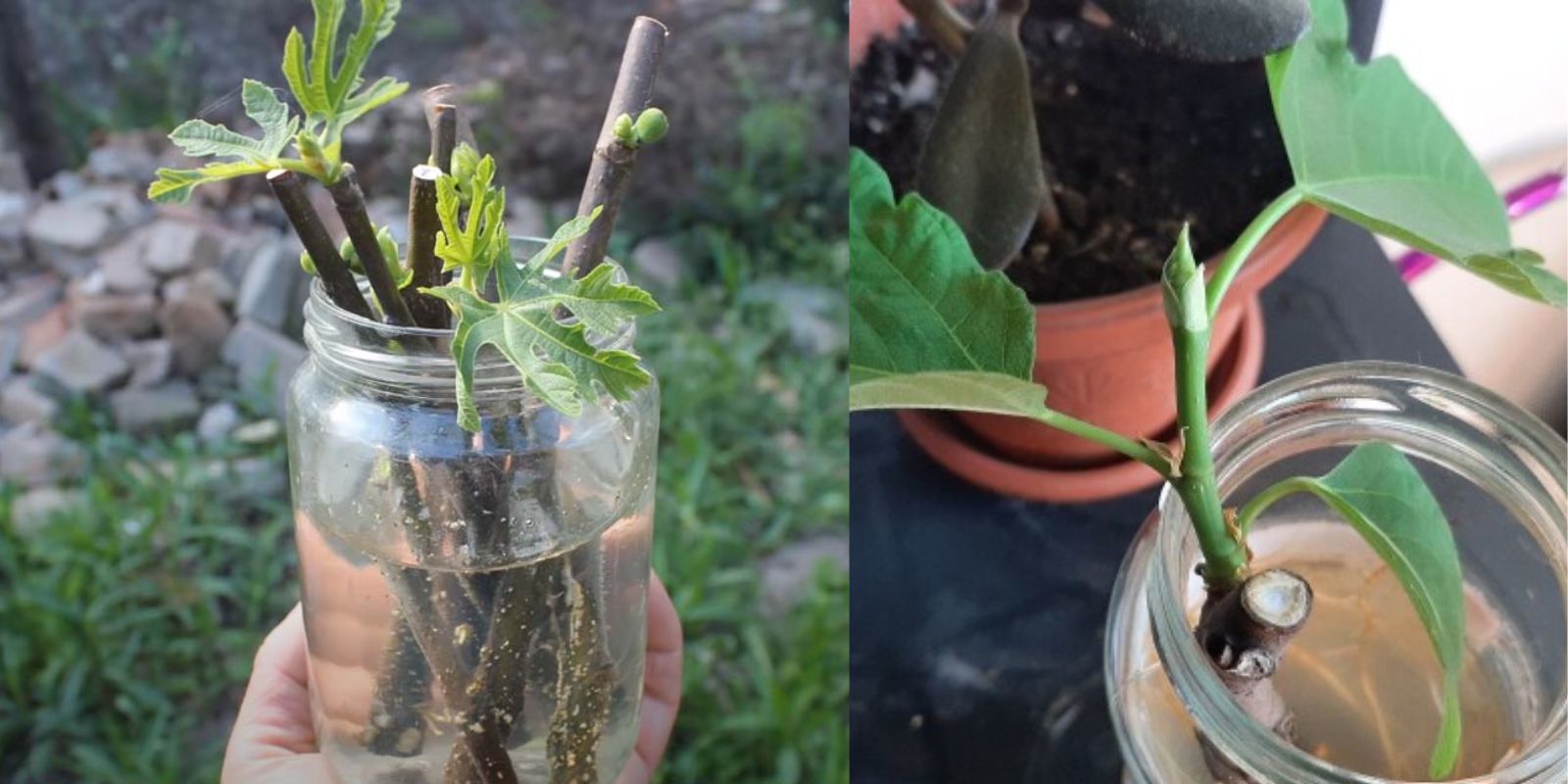Introduction
Fig trees (Ficus carica) are prized for their delicious fruit and ornamental appeal. One of the easiest and most effective ways to propagate a fig tree is by rooting a branch in water. This method is simple, requires minimal effort, and allows you to monitor root growth before transplanting the new tree into soil. Whether you are a beginner gardener or an experienced plant enthusiast, learning how to root a fig branch in water can help you expand your garden effortlessly.
In this article, we will guide you through the step-by-step process of propagating fig tree cuttings in water, discuss common mistakes to avoid, and share essential tips for successful rooting.
Why Root Fig Cuttings in Water?
Water propagation is an excellent method for fig trees because it offers several advantages:
- Easy Monitoring: You can see root development clearly without disturbing the cutting.
- Higher Success Rate: Water propagation provides consistent moisture, which encourages root growth.
- Minimal Resources Needed: All you need is a healthy fig branch, a jar of water, and patience.
Now, let’s dive into the step-by-step guide!
Step 1: Selecting the Right Fig Branch
To start, choose a healthy fig branch from an existing tree. Follow these guidelines:
✔ Select a branch that is about 6-10 inches long and at least the thickness of a pencil. ✔ Look for semi-hardwood cuttings—neither too young nor too woody. ✔ Ensure the cutting has multiple nodes (small bumps where leaves and roots grow). ✔ Take the cutting during early spring or late summer for best results.
Use clean, sharp pruning shears to make a diagonal cut just below a node. This increases the surface area for rooting.
Step 2: Preparing the Fig Cutting
Before placing the cutting in water, follow these preparation steps:
- Remove excess leaves – Trim off all but 2-3 leaves at the top to reduce moisture loss.
- Trim the bottom end – If the cutting has too many nodes, remove the lower ones to encourage root growth.
- Optional: Apply rooting hormone – Although not necessary, dipping the cut end in rooting hormone can speed up root development.
Step 3: Placing the Cutting in Water
Now, it’s time to start the rooting process:
- Fill a clean glass jar with fresh, non-chlorinated water.
- Insert the fig cutting, ensuring that at least 1-2 nodes are submerged.
- Place the jar in a warm, bright location, but avoid direct sunlight.
- Change the water every 3-4 days to prevent bacteria and mold growth.
Pro Tip: Use filtered or rainwater for best results, as tap water with high chlorine levels can slow root growth.
Step 4: Caring for the Fig Cutting
During the rooting phase, proper care is essential:
✅ Check for root development: Roots usually start emerging within 3-6 weeks. ✅ Monitor water clarity: If the water becomes cloudy, change it immediately. ✅ Avoid direct sun exposure: Too much heat can dry out the cutting. ✅ Be patient: Some cuttings take longer to root depending on the variety and environmental conditions.
Step 5: Transplanting the Rooted Cutting to Soil
Once the fig cutting has at least 2-3 inches of strong roots, it’s time to transfer it into soil:
- Prepare a small pot with well-draining potting mix (a blend of peat moss, perlite, and compost works well).
- Make a hole in the soil and gently place the rooted cutting inside.
- Water thoroughly to help the soil settle around the roots.
- Keep the plant in partial shade for the first few weeks, then gradually introduce it to full sun.
- Continue watering regularly, but avoid overwatering to prevent root rot.
Common Mistakes to Avoid
Even though water propagation is simple, mistakes can hinder success. Here are some things to avoid:
❌ Using a cutting that is too young or too woody – Semi-hardwood cuttings work best. ❌ Submerging too many leaves – This can cause rot and bacterial growth. ❌ Placing the jar in direct sunlight – Too much heat can dehydrate the cutting. ❌ Neglecting to change the water – Stagnant water can lead to fungal issues.
By avoiding these mistakes, you increase your chances of successfully rooting your fig branch.
Tips for Faster and Stronger Rooting
🌱 Use rooting hormone to speed up root development. 🌱 Keep the environment warm (around 70°F or 21°C) for optimal growth. 🌱 Consider covering the cutting with a plastic bag to maintain humidity. 🌱 Once transplanted, provide consistent watering but avoid soggy soil.
Conclusion
Rooting a fig branch in water is an easy and rewarding method for propagating fig trees. By following the steps outlined above, you can successfully grow a new fig tree from a simple cutting. This method not only helps you expand your garden but also ensures that you have a strong and healthy fig plant ready to thrive in your home or outdoor space.
💬 Have you tried rooting fig cuttings in water? Share your experience in the comments! 🌿👇
#FigTree #GardeningTips #PlantPropagation #RootingCuttings #GrowYourOwn #OrganicGardening #HomeGarden #PlantLovers

